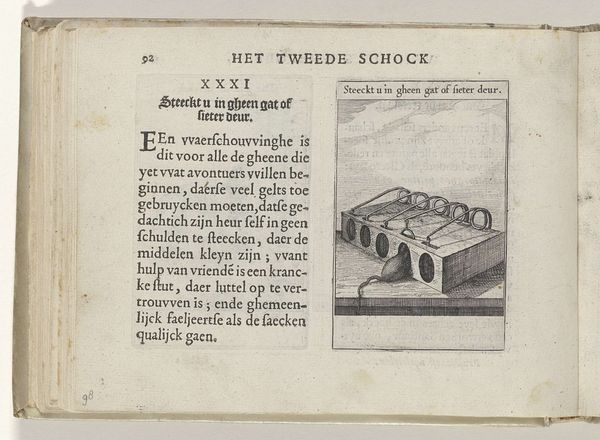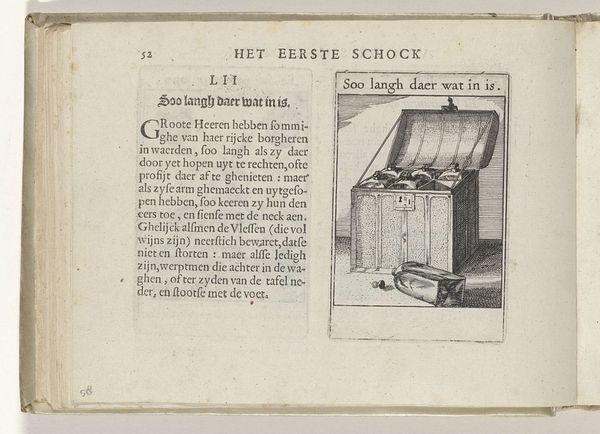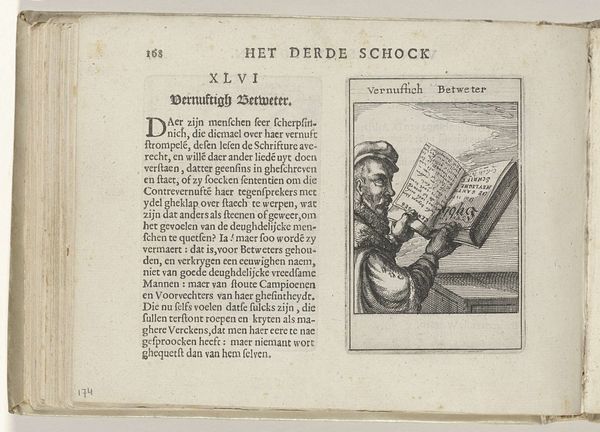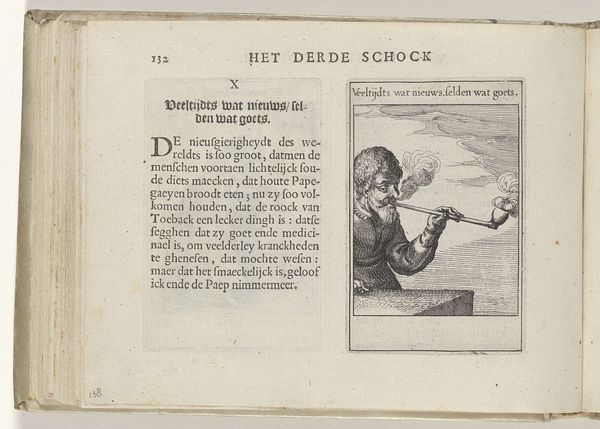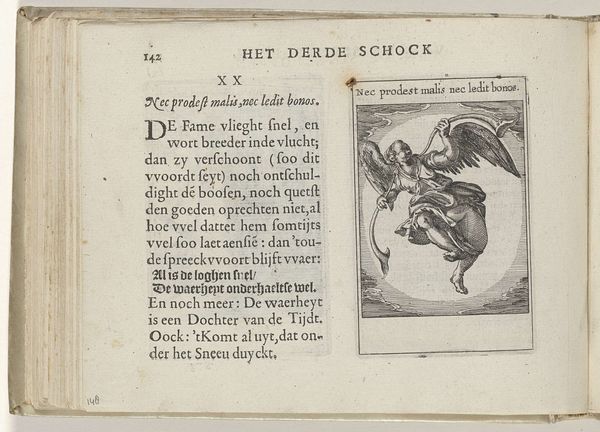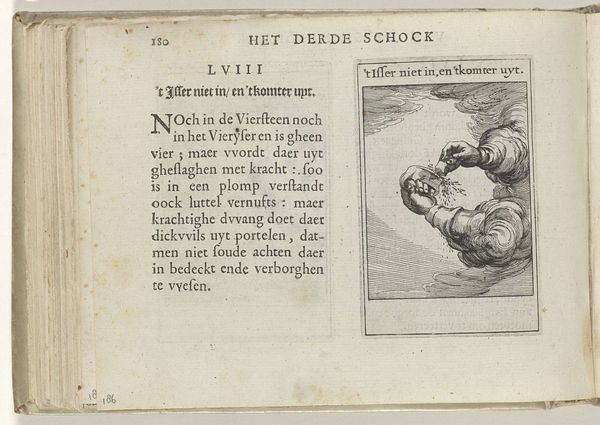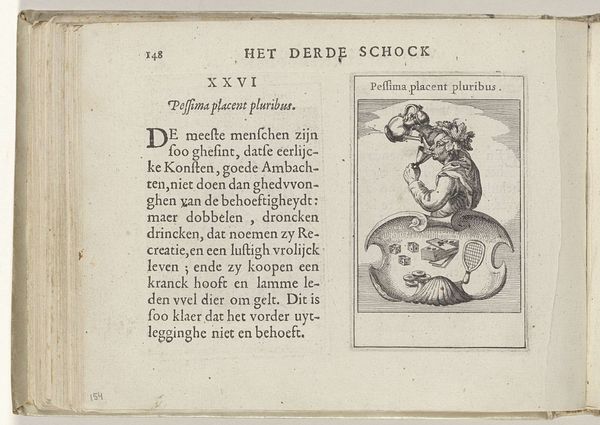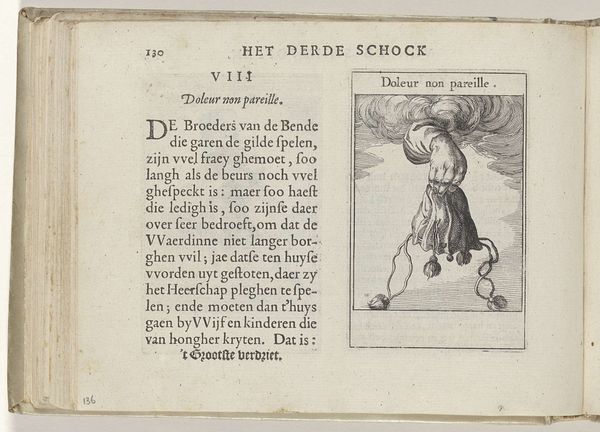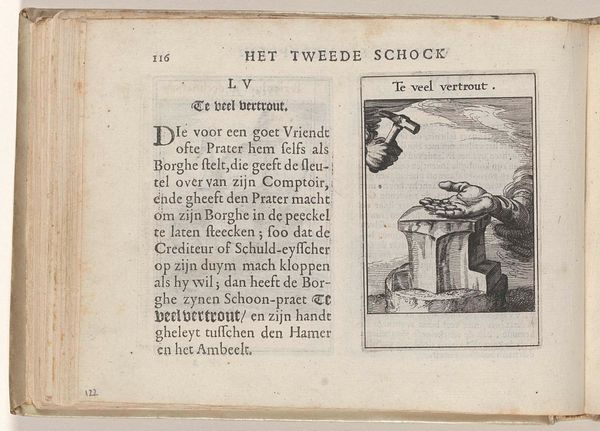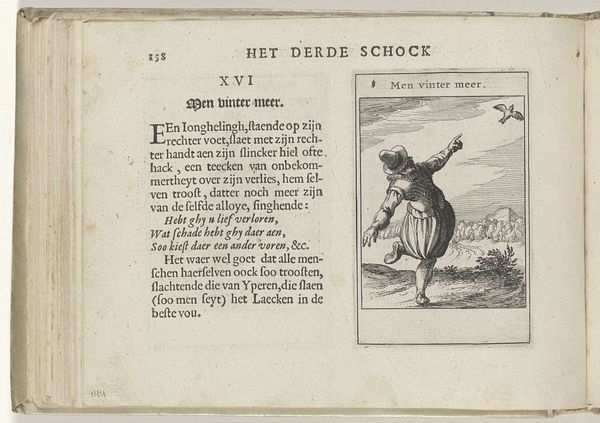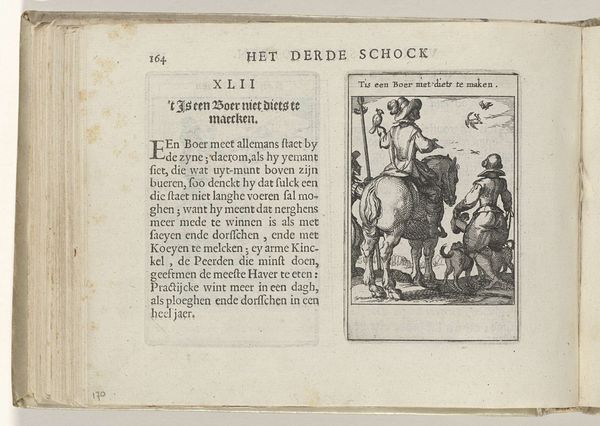
graphic-art, print, paper, ink, engraving
#
graphic-art
#
narrative-art
#
dutch-golden-age
#
ink paper printed
# print
#
figuration
#
paper
#
ink
#
line
#
genre-painting
#
history-painting
#
engraving
#
miniature
#
realism
Dimensions: height 137 mm, width 188 mm, height 95 mm, width 60 mm
Copyright: Rijks Museum: Open Domain
Curator: Today we are looking at “LVI Mignon des Dames”, a 17th-century engraving by Roemer Visscher, housed here at the Rijksmuseum. It's an illustration within a larger book, rendered in ink on paper. Editor: It strikes me as quite… utilitarian. The severe lines and sharp angles don’t suggest the “Mignon” in its title. The overall impression feels rather bleak. Curator: Yes, on its surface, it shows a brazier, a small, portable stove, held by a hand, presumably to warm… women. But notice how Visscher uses the image as a complex metaphor. This object is not merely functional; it's imbued with symbolism reflecting social and gender dynamics of the time. Editor: Right. And reading the text beside it, which speaks of those who "must devote themselves to serving" women with "humorous, amusing speech", clarifies the underlying power dynamics at play. The warming stove isn't just about comfort; it's about servitude, and the performance of courtly love in 17th-century Dutch society. Curator: Exactly. The small size of the stove miniaturizes and almost caricatures this idea of courtly servitude. It's like saying, "Here, warm your hands, ladies, while we praise your fashionable dresses and witty words." It subtly satirizes the expectations of women's social roles. Even the repetition of “Mignon des Dames” in both the image heading and the written description creates a sense of emphasis and maybe even excess. Editor: The hand entering the picture from the side is also significant. It’s not organically connected to the brazier; it’s placed to signify labor. Also, that action seems quite subservient in nature. And, although the quality is very high, printmaking like engraving made it affordable for many, increasing its viewership and furthering dialogues about the ideas represented in the image. Curator: Indeed, Visscher used commonplace objects as moral allegories to reveal complex socio-political nuances that permeated Golden Age Dutch life. The choice of the stove highlights the expectations of proper behavior in gendered settings. It urges reflection on what we truly cherish, while exposing the illusion of effortless elegance among refined ladies. Editor: So this humble engraving, a small rectangle in a book, offers a lens into the negotiation of gender and social status, the expectations of women, and what it took to gain their favor centuries ago. An interesting critique that stays poignant through ages.
Comments
No comments
Be the first to comment and join the conversation on the ultimate creative platform.

